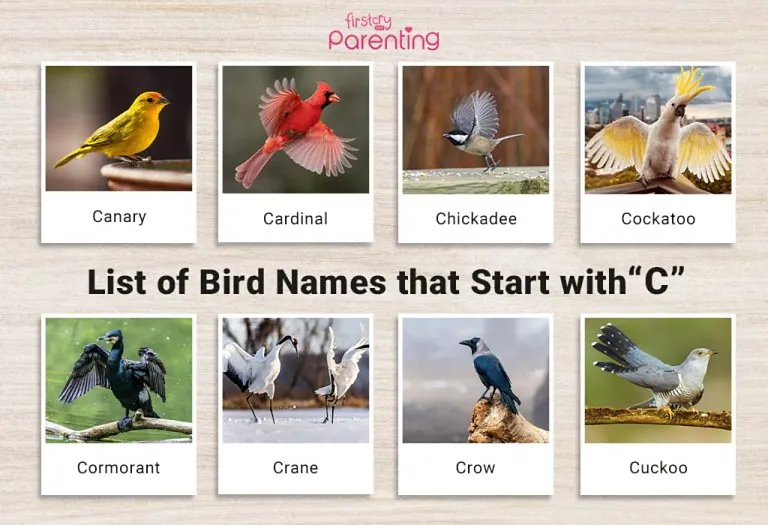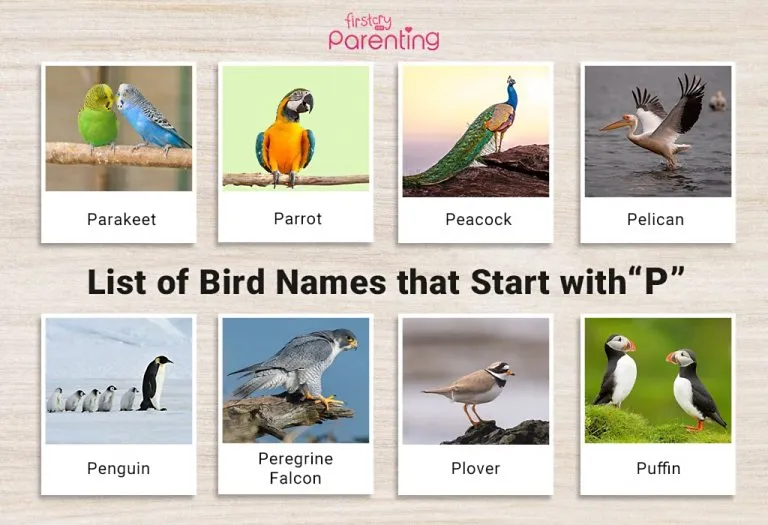List of Birds That Start With C
- List of Common Birds That Start With C
- Other Birds Beginning With C
- FAQs
- Birds Names That Begin With (A to Z)
Bird-watching, or as some like to call it, ‘avian appreciation’, is a pastime cherished by many. Whether you’re an adult looking to expand your avian knowledge or a preschool teacher hoping to expand your kids’ vocabulary, the world of birds is vast and enchanting. In this cosy nook of the internet, we’re about to embark on a delightful journey into the realm of bird names that start with the letter C. Ideal for both nature enthusiasts and those seeking C letter bird names for preschoolers and kids, this list is designed to captivate and educate. So, let’s dive in, feathered friend enthusiasts, and uncover some of the most captivating species that our planet has to offer!
List of Common Birds That Start With C
If you’ve ever been curious about birds beginning with the letter C, you’re in the right place. From cheerful canaries to cunning crows, this section covers some common and fascinating bird names that might just become your new favourites. Let’s dive into this exciting world of bird names with C and get to know them better.
1. Cockatoo
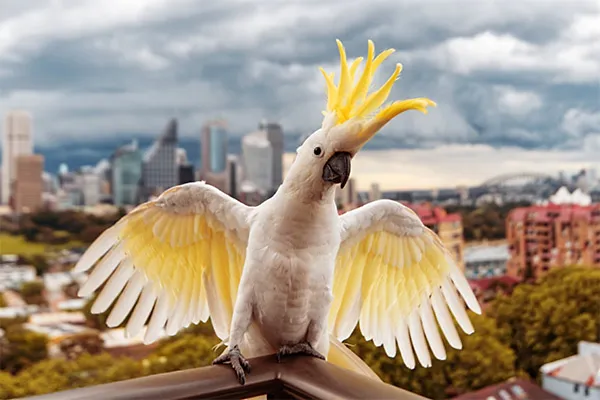
Scientific Name: Cacatuidae
Where Is It Found: Australia, Southeast Asia
Cockatoos, with their showy crests and bright colours, are not just beautiful but also highly intelligent. They are often kept as pets due to their playful nature and ability to mimic sounds.
Interesting Facts:
- Cockatoos have been known to use tools, such as sticks, to retrieve food.
- They also have a lifespan that can exceed 60 years in captivity.
2. Canary
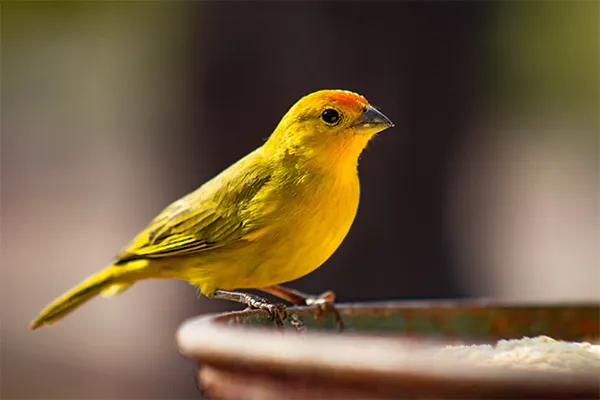
Scientific Name: Serinus canaria
Where Is It Found: Canary Islands, Azores, Madeira
These small, bright yellow birds, especially the males, are famous for their melodious singing. Their cheerful tunes have made them popular as household pets.
Interesting Facts:
- Historically, canaries were used in coal mines to detect harmful gases. If the bird showed signs of distress, miners knew they needed to evacuate.
3. Cormorant
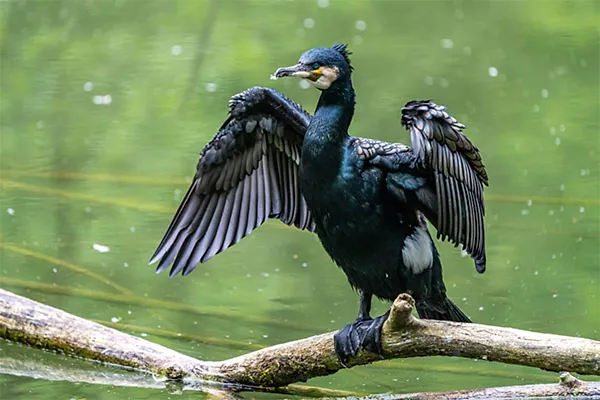
Scientific Name: Phalacrocoracidae
Where Is It Found: Worldwide, especially near coastlines
Cormorants are large water birds with a long neck. They often spread their wings out to dry after diving underwater to catch fish.
Interesting Facts:
- In some parts of the world, especially Asia, cormorants are trained by fishermen to catch fish on their behalf.
4. Cardinal
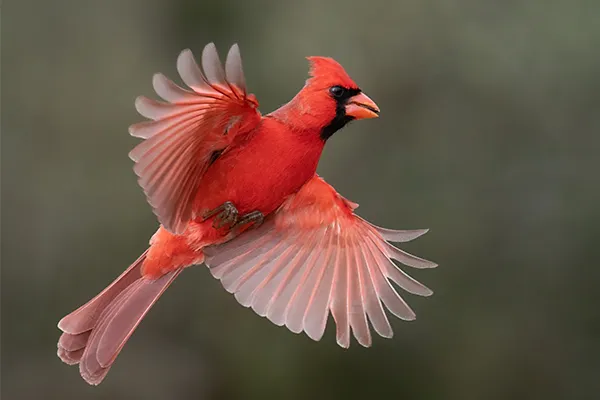
Scientific Name: Cardinalis cardinalis
Where Is It Found: North and South America
Known for their bright red plumage (in males) and beautiful songs, c ardinals are a favourite among bird enthusiasts.
Interesting Facts:
- The cardinal is the state bird of seven U.S. states, making it the most popular state bird.
5. Crow
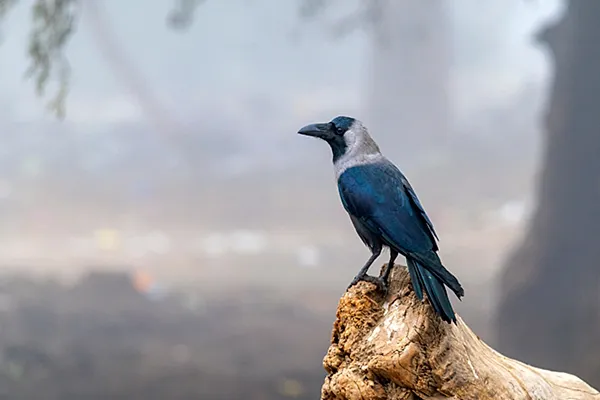
Scientific Name: Corvus
Where Is It Found: Worldwide
Description: These intelligent black birds are known for their adaptability. They can be seen in both urban and rural settings, often searching for food.
Interesting Facts:
- Crows have been observed using tools and even playing games.
- They possess problem-solving skills that rival those of some primates.
6. Chickadee
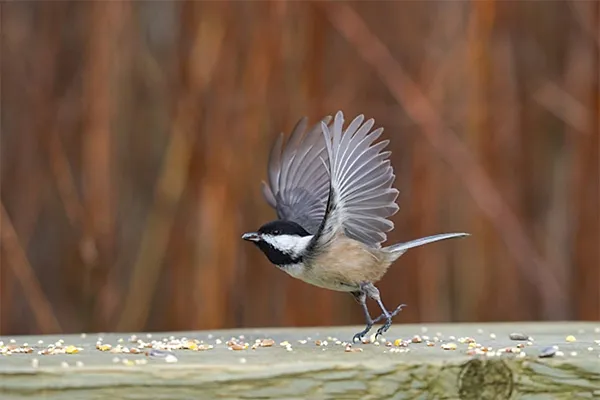
Scientific Name: Poecile
Where Is It Found: North America
Description: Small, cute, and with a distinctive “chick-a-dee-dee” call, chickadees are delightful birds to watch, especially during winter.
Interesting Facts :
- The chickadee’s song changes with the seasons and can be used to express curiosity, give an alarm call, or identify itself.
7. Crane
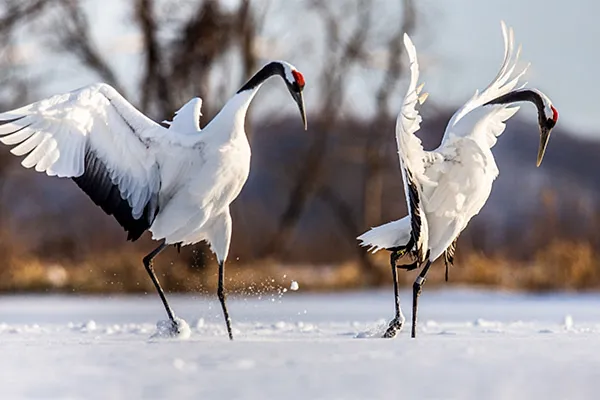
Scientific Name: Gruidae
Where Is It Found: Worldwide
Tall and graceful, cranes are known for their elaborate dances during mating seasons. They have long legs and necks, making them excellent waders.
Interesting Facts:
- Cranes are among the oldest living birds on Earth.
- Fossil records show their presence over 10 million years ago.
8. Curlew
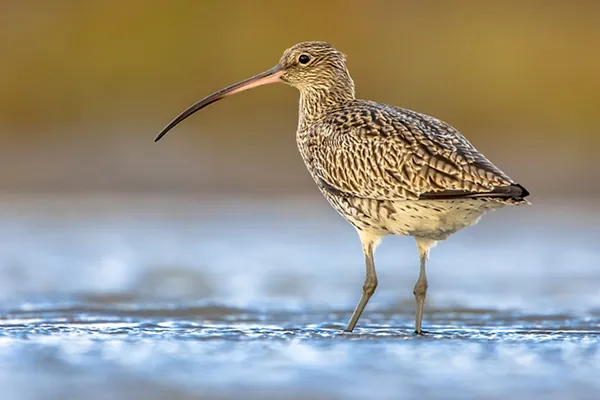
Scientific Name: Numenius
Where Is It Found: Worldwide, especially in coastal and wetland areas
Curlews have long, curved bills which they use to probe into mud and sand for prey. Their haunting calls can often be heard in their habitats.
Interesting Facts:
- The name ‘curlew’ is believed to be derived from the Old French word ‘courlieu’, meaning ‘messenger’, perhaps due to their distinctive calls.
9. Cuckoo
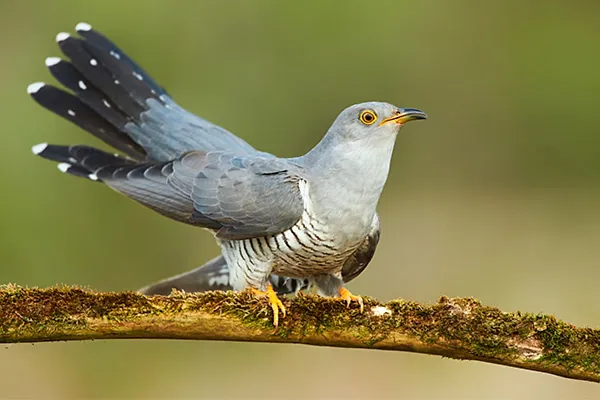
Scientific Name: Cuculidae
Where Is It Found: Worldwide, especially in Asia and Europe
Cuckoos are known for their distinctive calls from which they get their name. Many species are brood parasites, laying their eggs in the nests of other birds.
Interesting Facts:
- The cuckoo’s behaviour of laying its eggs in other birds’ nests is very popular.
- Cuckoos love to feed on hairy caterpillars.
- Out of 54 species of Old World cuckoos, only two are found in Europe, while the rest live in Africa, Asia, and Australasia.
10. Chough
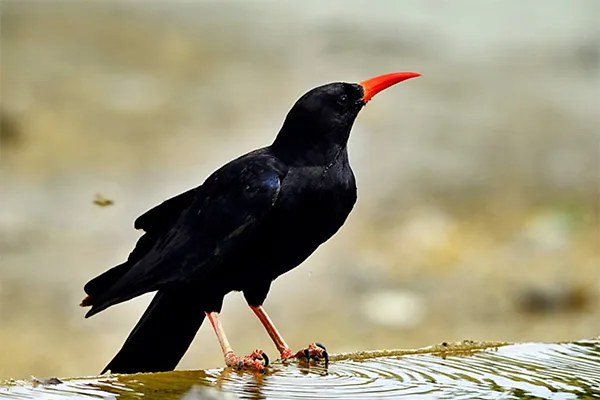
Scientific Name: Pyrrhocorax
Where Is It Found: Europe, Asia, and North Africa
Choughs are part of the crow family and are recognised by their curved red bills and red legs. They are agile in the air, often seen performing acrobatics.
Interesting Facts:
- These birds have strong cultural significance in Cornwall, UK, and are considered a symbol of the region.
11. Cotinga
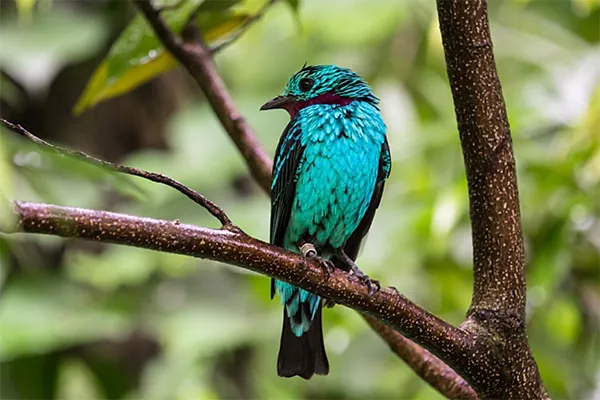
Scientific Name: Cotingidae
Where Is It Found: Central and South America
Cotingas are known for their vibrant colours, especially in males. They occupy the treetops in tropical rainforests and have diverse vocalisations.
Interesting Facts:
- Some species of cotinga have unique feather structures that make whistling sounds when they fly.
12. Canvasback
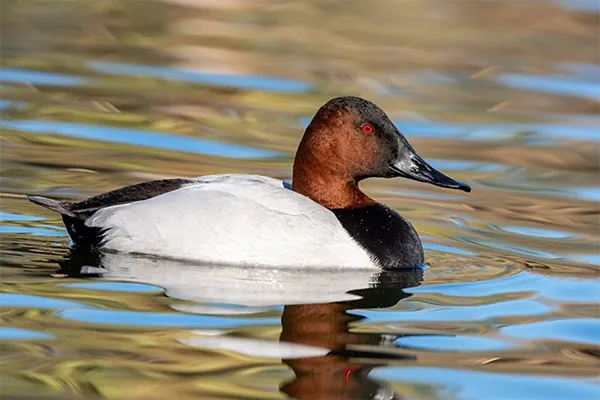
Scientific Name: Aythya valisineria
Where Is It Found: North America
Description: A diving duck with a distinctive sloping profile, the canvasback has a reddish head and neck. It primarily feeds on aquatic plants.
Interesting Facts:
- The canvasback’s scientific name, valisineria refers to wild celery, which is a primary food source for the species.
13. Cassowary
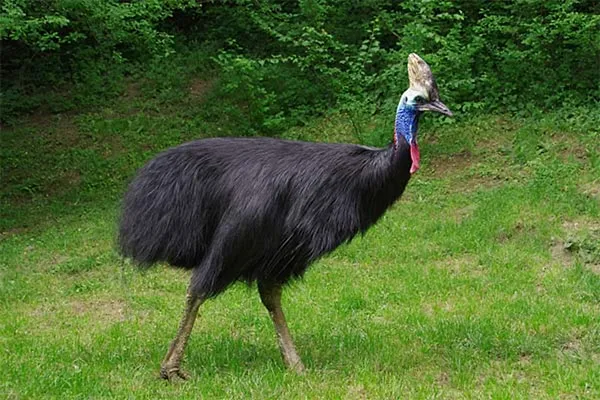
Scientific Name: Casuarius
Where Is It Found: Northern Australia and New Guinea
Cassowaries are large, flightless birds with a striking blue and black colouration. They are known for their helmet-like casques and powerful legs.
Interesting Facts:
- Cassowaries are considered one of the most dangerous birds in the world due to their powerful kicks.
- They play a crucial role in rainforest seed dispersal.
14. Chat
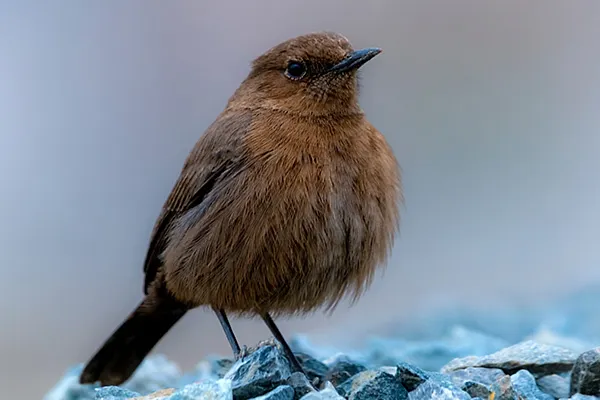
Scientific Name: Oenanthe
Where Is It Found: Europe, Asia, and Africa
Chats are small songbirds with a variety of plumage patterns. They are usually seen hopping on the ground in open landscapes.
Interesting Facts:
- The name ‘chat’ is an onomatopoeic reference to their distinct ‘chat-chat’ call.
- Different species have varied calls, making them intriguing subjects for birdwatchers.
15. Cinereous Vulture
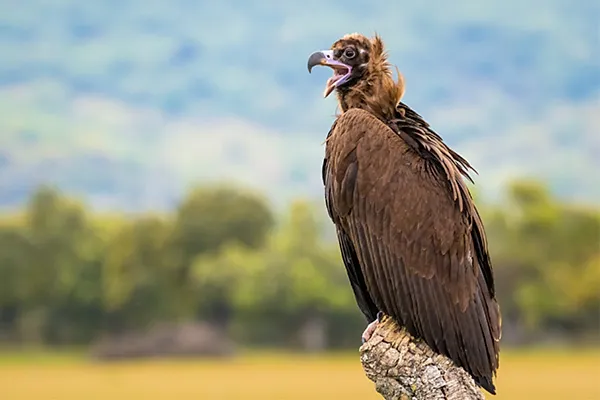
Scientific Name: Aegypius monachus
Where Is It Found: Asia and parts of Europe
This is one of the largest flying birds. With a dark, featherless head and a massive wingspan, cinereous vultures are impressive scavengers.
Interesting Facts:
- Also known as the monk vulture due to its bald head resembling a monk’s cap, this bird can soar at high altitudes and can travel vast distances in search of food.
16. Cisticola
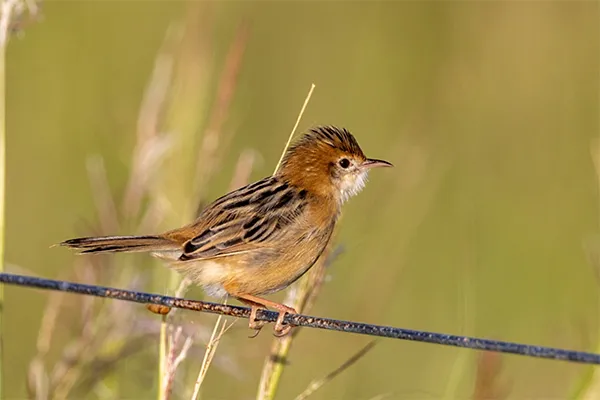
Scientific Name: Cisticola
Where Is It Found: Africa, Asia, and Australasia
These tiny birds have a loud, distinctive call. They are usually found in grasslands and wetlands, often hidden but always heard.
Interesting Facts:
- Their name is derived from the Latin word ‘cisticola’, which means ‘a small box’, possibly alluding to their compact size.
Other Birds Beginning With C
When we think of avian species, the diversity is vast, especially when a bird starts with the letter C. These birds, ranging from the common to the uniquely named, span various habitats and regions. Here are some notable examples:
- Cockatoo
- Canary
- Cardinal
- Cuckoo
- Crane
- Curlew
- Cormorant
- Coot
- Chaffinch
- Crow
- Chickadee
- Coucal
- Corella
- Capercaillie
- Curassow
- Cassowary
- Cinclodes
- Corncrake
- Chuck-will’s-widow
- Chat
- Cisticola
- Cochoa
- Condor
- Cordon-bleu
- Cotinga
- Cowbird
- Cacique
- Cock-of-the-rock
- Creeper
- Crossbill
- Cagou
- Coua
- Crake
- Chlorophonia
- Cariama
- Conure
- Cygnet
- Crested Pigeon
- Chukar Partridge
- Catbird
- Cissa
- Caracara
- Crowned Pigeon
- Chough
- Curassow
- Cootie
- Cinereous Mourner
- Caracara
- Craveri’s Murrelet
FAQs
1. What’s the most common bird that starts with the letter C?
The most common bird that begins with the letter C is likely the Canary, known for its singing abilities and often kept as a pet.
2. Are all C-starting birds found in the same habitat?
No, birds that start with the letter C can be found in diverse habitats ranging from forests and wetlands to deserts and urban areas.
3. Is the Cassowary considered dangerous?
Yes, the cassowary, native to the rainforests of Australia and Papua New Guinea, is often considered one of the most dangerous birds due to its powerful kick.
4. Can Cockatoos talk like parrots?
Yes, cockatoos, being a type of parrot, can mimic sounds and human speech, although their vocabulary might be limited compared to some other parrot species.
5. Why is the Cardinal so popular in North America?
The cardinal, with its bright red colouration and distinctive crest, is not only a beautiful sight but is also the state bird for seven U.S. states, making it an emblematic and cherished species in North America.
Birds that start with the letter C encompass a diverse array, each unique in its habitat, behaviour, and appearance. From the melodious Canary to the striking Cassowary, these avian species showcase the rich tapestry of birdlife on our planet. Their varied presences in different habitats remind us of the importance of conservation efforts to protect such biodiversity. Each bird, irrespective of its alphabet categorisation, plays a crucial role in the ecological balance. As we appreciate these C-starting birds, let’s keep nature’s incredible ability protected so it continues to amaze and inspire!
Birds Names That Begin With (A to Z)
| A | B | C | D | E | F | G | H | I |
| J | K | L | M | N | O | P | Q | R |
| S | T | U | V | W | X | Y | Z |
Was This Article Helpful?
Parenting is a huge responsibility, for you as a caregiver, but also for us as a parenting content platform. We understand that and take our responsibility of creating credible content seriously. FirstCry Parenting articles are written and published only after extensive research using factually sound references to deliver quality content that is accurate, validated by experts, and completely reliable. To understand how we go about creating content that is credible, read our editorial policy here.






